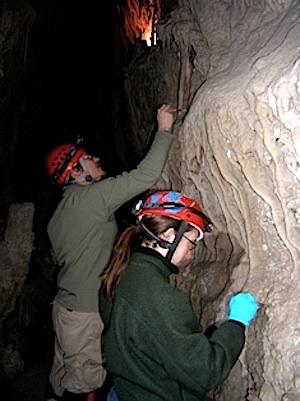You wouldn't immediately think caves would be a sink for garbage, but quite a bit of junk collects in Lehman Cave at Great Basin National Park each year. Recently, volunteers hauled more than two tons of garbage out of the cave.
Thirty-seven volunteers from Nevada, Utah, California, Idaho, Canada, and Australia worked last weekend to clean up the cave during the park's annual lint removal camp.
The crews picked lint from cave formations and walls along 600 feet of passage and treated algae accumulations near lights. According to park officials, "Lint is introduced to the cave environment by the approximately 40,000 people who enter the cave each year. Lint is composed of fibers, hairs, skin cells, dust, and other foreign particles. Lint can become cemented into cave formations, causing discoloration or even dissolution of natural cave surfaces. Lint also acts as an artificial food source, potentially causing imbalances in cave biota communities."
The volunteers also carried out more than 4,000 pounds of old trail debris, particularly sand, that had covered formations. They used brushes and dust pans and dumped the sand into five-gallon buckets, which were then carried or wheeled out one or two buckets at a time.
“The lint campers’ volunteer work is invaluable to preserving the world-class Lehman Caves formations,” said Great Basin Superintendent Steven Mietz. “While providing a vital service to the park, the volunteers also get a unique, up-close and prolonged experience of the cave that few visitors enjoy.”
Nine-year old Rebecca Croswhite echoed that sentiment: “I can’t wait until the next lint camp!”
The interagency effort was also supported by the Western Cave Conservancy, a group dedicated to protecting caves in the western United States. Half the participants were under age 25, and some were fulfilling school community service projects.
"Volunteers with a wide range of experience, from long-time grotto members to families new to caving, were able to make a lasting contribution to cave conservation,” said Ben Roberts, the park's chief of natural resources. “Many features in the cave were uncovered after decades under trail debris, including rimstone dams in the Lodge Room and near the King and Queens Bathtub.
"Thanks to the volunteers’ hard work, visitors will be able to enjoy these features now and into the future."
The park is planning to hold another lint and restoration camp next year, continuing to engage park visitors in new and different ways to celebrate the NPS centennial.




Add comment